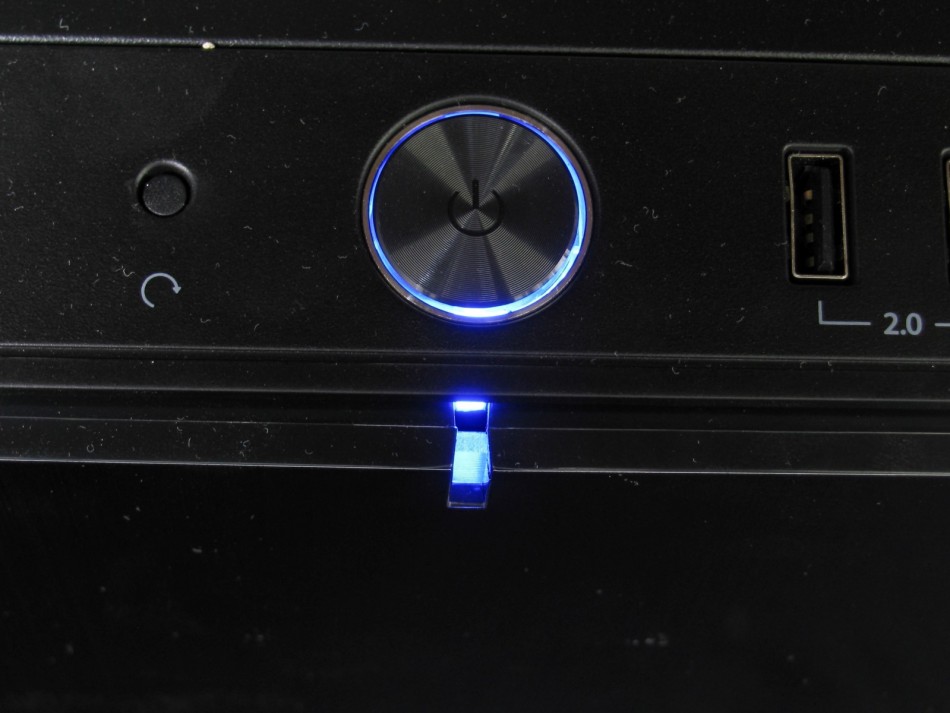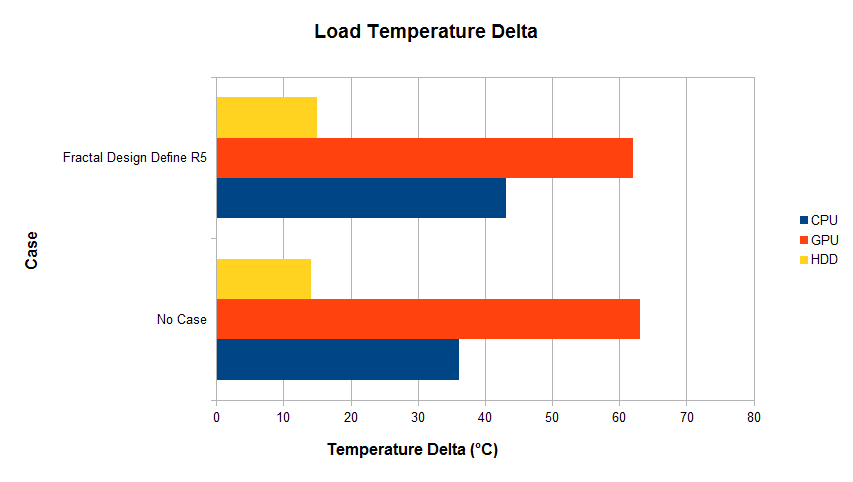Installation and Testing
My test configuration for ATX cases is very similar to that which I use for testing Micro ATX cases, the only differences being that the motherboard is an Intel D975XBX2, and a passively cooled Nvidia GeForce 7300GT Graphics card is used. The CPU is the same Pentium D 830 with a 130W TDP. From now on, the temperature controlling will be disabled for the CPU fan when testing for the temperature, as it makes for more consistent test conditions.
The Define R5’s cable management was fantastic, so the cables are well hidden, and the resulting build looks very clean. I did, however, have a few minor complaints with this case. One was with the hole above the motherboard for the EPS12V connector. It’s an extremely tight squeeze getting it to fit through. I was able to get it to fit by pushing it through sideways, but it won’t go straight in. There is room there to make the holes a few millimeters wider, which would have made it much easier. The other two complaints relate to the standoffs. First of all, there were only nine included. While this is enough for most motherboards, the Intel D975XBX2 is an exception, as it has a tenth screw hole just behind the expansion slots. I also found while screwing the motherboard in that the standoffs are unusually easy to cross-thread. I had to use a little extra care to make sure I had the screws in straight before I did them all the way up. I will stress again, though that these are minor issues. For the most part, the Define R5 is an excellent case to work with, and is generally fairly easy to build in.
I was also able to keep the area behind the motherboard tray reasonably neat. Unlike on some other cases (The Cooler Master N200, for example), there was ample room for the bundle of unused cables, and the side panel went on with very little difficulty. The Velcro ties were also plenty long enough for the bundles of wires that went from top to bottom. This case does not include a USB3-USB2 header adapter, so I had to use my own. This will probably not affect most users however, as most who buy this case would use it with a modern motherboard which has USB3.
The power and disk activity LED are both blue. They share the one hole in the front of the case, which gets brighter when there is disk activity. We feel that the brightness of the LEDs is a good level. Even with the HDD active, the light is not blinding to look at. It’s just enough that you would notice it if you were looking for it.
Test Reults
The ambient temperature during the tests was 28°C. The CPU ran at 47°C idling and 71°C under load (a delta of 19°C and 43°C respectively). The GPU ran at 54°C idle and 90°C under load, and the HDD ran at 37°C idle and 43°C under load. These temperatures are high, particularly under load, but not unusual considering the components used.
Compared to just sitting on an open bench, the CPU ran about 4°C Warmer when idling and 7°C Warmer under load when installed in the Define R5. The GPU, on the other hand, ran slightly cooler – likely because it is passively cooled and was positioned more directly in the airflow path of the front case fan. The HDD temperature was 1°C Warmer in the case, but it would have probably run cooler if either it was installed in the airflow path of the front fan, or if a second front fan was installed for the bottom drive bay. Note that these results were all taken with the case fans connected to the fan controller and set to low.
The cases noise suppression was excellent. The Cooler Master TX3 (which we use on the our test PCs) is a fairly noisy cooler with the fan at maximum speed (2700 RPM), and was clearly audible over everything else in my workshop when the test PC was on the bench. In the R5, I could hear it, but only with the air conditioning and the server/workstation PC turned off. With temperature controlling enabled, the PC was completely inaudible, even with everything turned off.
All up, this is a decent result. While there are cases on the market which offer better cooling, they do not offer the same level of noise suppression as the Define R5 does.










